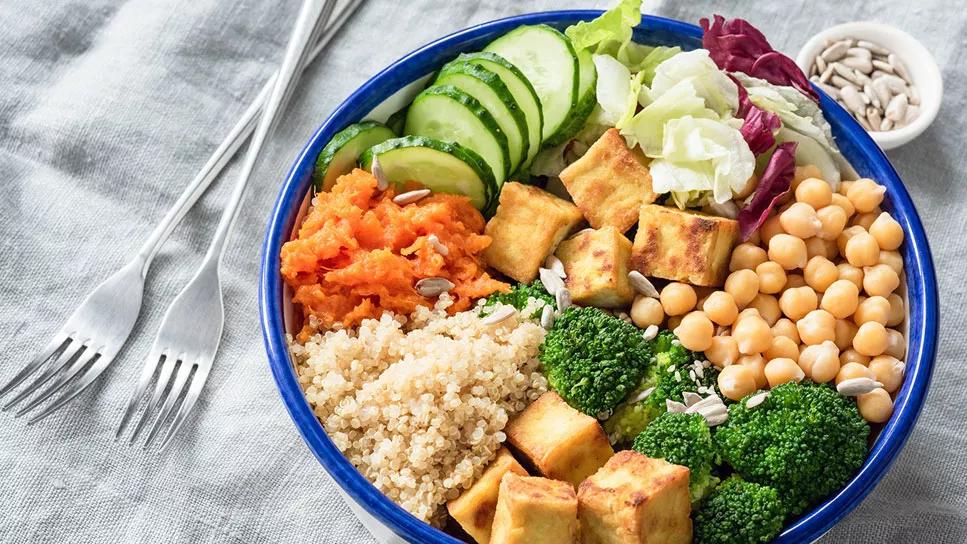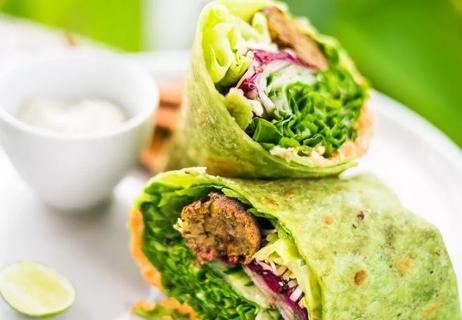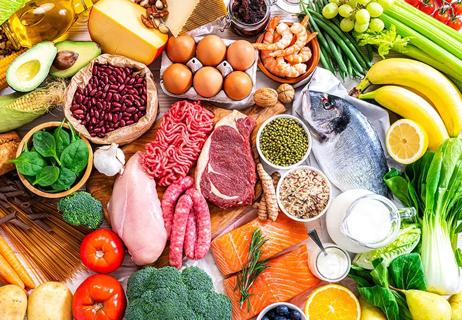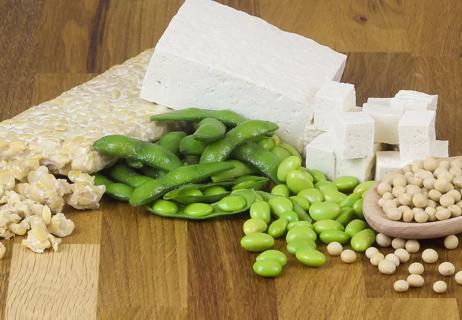Giving up meat can have a significant effect on lowering cholesterol

It can be challenging at first to make lifestyle changes when you’re attempting to build a healthier life. How do you know where to begin? Should you tackle everything at once, or just the small everyday things that feel more manageable?
Advertisement
Cleveland Clinic is a non-profit academic medical center. Advertising on our site helps support our mission. We do not endorse non-Cleveland Clinic products or services. Policy
Certainly, when you boil down your focus to just one area of improvement, a healthier lifestyle can become a bit more manageable when you measure your successes over time and become more acclimated to embracing healthier habits.
If having a healthy heart is a top priority for you, your wellness journey might begin with taking a close, hard look at your diet and nutrition — what kinds of foods you’re eating, how often you’re eating and factors like portion control or weight management programs.
According to registered dietitian Julia Zumpano, RD, LD, a common dietary solution for a healthy heart is focusing more on developing a vegetarian diet by cutting out red meats and expanding on eating meatless meals, legumes, and other vegetables and fruits.
“Reducing your intake of saturated fat, which is primarily found in animal products, can have a significant impact on reducing the artery-clogging ‘bad’ cholesterol, called LDL cholesterol, in your blood,” she says.
“Cutting back on animal products may not always be enough. Palm oil, coconut oil and refined vegetable oils can also have a negative impact on your LDL.”
Zumpano explores more about how a vegetarian diet can positively impact your heart health, along with small ways to make a vegetarian lifestyle work for you.
Advertisement
A vegetarian diet isn’t just about counting calories and weight management (though it can certainly help with that, too). A vegetarian diet has many health benefits that include reducing your risk of:
Like the heart-healthy Mediterranean diet (which most healthcare providers promote as the go-to nutritional plan of choice), a vegetarian diet focuses on a balanced daily intake of foods like:
Sounds simple enough, right? It can be! But the challenge to adapting to this kind of diet is making sure you’re getting enough protein, vitamins and other nutrients to get you through the day feeling energized and highly motivated.
“Most people turn to simple carbs for energy on a vegetarian diet, but this can lead to drops and elevations in blood sugars which often result in eating more carbs,” explains Zumpano. “Protein and vegetables can be commonly overlooked, so focus on protein with each meal and snack.”
If you’re looking to embrace being a vegetarian, particularly for your heart health, the following tips can be helpful, especially for first-timers.
If you’ve been a meat and dairy eater all your life, try phasing in your new way of eating, rather than trying to do it all at once. Some people find gradual changes over time easier to adopt and maintain.
You could phase in a new change every week, every two weeks or whatever pace you can handle best. Or try Meatless Mondays once a week and gradually increase the number of days each week or every couple of weeks that you don’t have meat. Even though it may feel like your progress is slow, know that you will achieve your goal eventually as long as you stick with it.
“For example, try first to eliminate red meat. The next step could be to eliminate dark meat, skin and fat in poultry or eliminate poultry all altogether — and so on,” suggests Zumpano.
You can replace meat with lean vegetarian sources of protein like:
“Nuts are also a good protein source, but they tend to be high in fat, so try to limit nuts to about an ounce a day,” she adds.
One area that vegetarians need to pay attention to is iron intake. Plant sources of iron include:
Advertisement
One important note: plant-based sources of iron are not absorbed as well as animal-based sources, so make sure you pair them with foods rich in vitamin C like citrus fruits, tomatoes, strawberries or yellow, orange and red bell peppers.
If you tend to be anemic, talk to your healthcare provider about taking a daily iron supplement.
All fruits and vegetables can fit into a heart-healthy diet. Choose fresh fruits as often as possible, and limit dried fruits, canned fruits and juices.
Berries are among the lowest in sugar, the highest in fiber and provide additional nutritional benefits per serving, making them the perfect snack between meals or as healthy additions to salads, side dishes and more. Try:
“Melons, on the other hand, tend to be higher in sugar, so watch your intake of this fruit,” cautions Zumpano. “All fruit contains natural sugar, so choose smaller pieces of fruit or limit your portion to a cup per serving.”
Among underrated vegetables you can eat, these dark leafy greens have a more favorable nutritional profile:
Starchy vegetables, like potatoes, peas and corn, are less advised due to the higher carbohydrate and lower nutrient content per serving — but they’re still OK to have.
Advertisement
“These are all right to eat regularly, but you want to have them in moderation,” says Zumpano.
With vegetables as well as fruits, try to eat a wide variety of colors to ensure you’re getting a broad range of nutrients. The darker or more vivid the color, the better.
Nuts are a good source of healthy fats and protein, so they’ll be an important nutrient source for vegetarians. Almonds, hazelnuts and walnuts have been shown to be the most heart-beneficial because they provide more healthy fats.
“Peanuts and pecans have a moderate level of saturated fat, but you can still include them in moderation,” clarifies Zumpano. “You may also want to limit macadamia nuts, cashews and Brazil nuts because of their higher levels of saturated fat and lower protein content.”
If you decide to be the kind of vegetarian who eats milk and other dairy products, know that dairy can be safely included in a heart-healthy diet as long as you choose low-fat or part-skim varieties.
“Keep in mind that dairy does carry saturated fat, so if you’re eating heart-healthy, you’ll want to minimize intake of these foods,” stresses Zumpano. “A dairy alternative, such as almond milk, soy milk or cashew milk, doesn’t contain saturated fat or contains very little. So, these alternative milks could be a better choice if you are attempting to decrease animal products from your diet.”
Advertisement
Also, keep in mind that most milk alternatives don’t contain much protein, so you’ll likely want to choose soy milk or a protein-fortified milk alternative to help you meet your protein needs.
The hardest part about changing aspects of your lifestyle is just getting started. But you have to start somewhere if you’re going to get across the finish line of your health and wellness goals.
One way to do this is to keep a food journal so you can track what’s working and what’s not, and then adjust your meals along the way. But prepping your meals in advance can also be helpful because it gets you to sit down and be more intentional about what you’re putting into your body and how you’re going to tackle your goals.
“Remember, when it comes to eating, it doesn’t have to be an all-or-nothing approach,” encourages Zumpano. “Just decreasing your intake of animal products in general can significantly improve your heart health. And increasing plant-based foods will provide you with more antioxidants, fiber, vitamins and minerals, which all lead to overall better health and longevity.”
Learn more about our editorial process.
Advertisement

A nutrient-packed diet driven by fruits and veggies can lower certain health risks

It’s possible to drop a few pounds as long as you watch what you eat

What to know about this semi-vegetarian lifestyle

Turn to these foods for plant protein

High in antioxidants and vitamins B9, C and K, cauliflower helps fight illness, strengthens bones, and protects your liver and gut

Fainting, heart palpitations and shortness of breath are just a few signs your heart may need help

You may notice this combination when you’re exercising or after standing up too fast

Calling 911 or emergency services should always be your first step

If you’re feeling short of breath, sleep can be tough — propping yourself up or sleeping on your side may help

If you fear the unknown or find yourself needing reassurance often, you may identify with this attachment style

If you’re looking to boost your gut health, it’s better to get fiber from whole foods